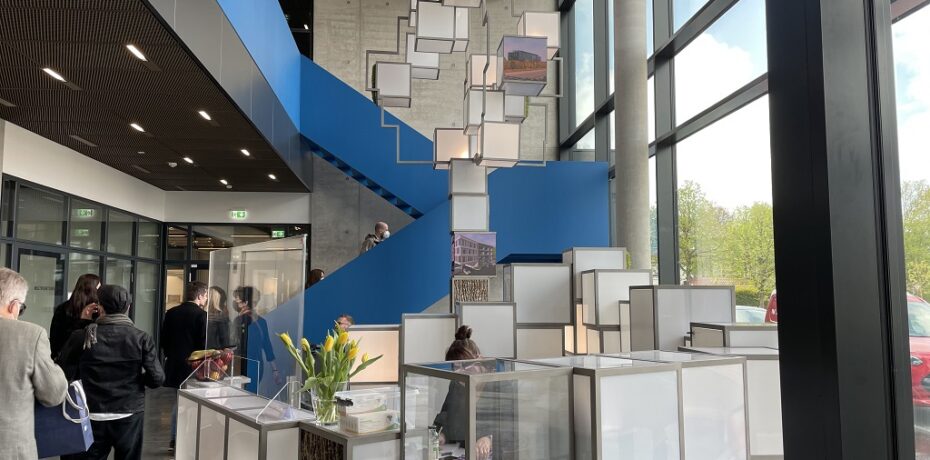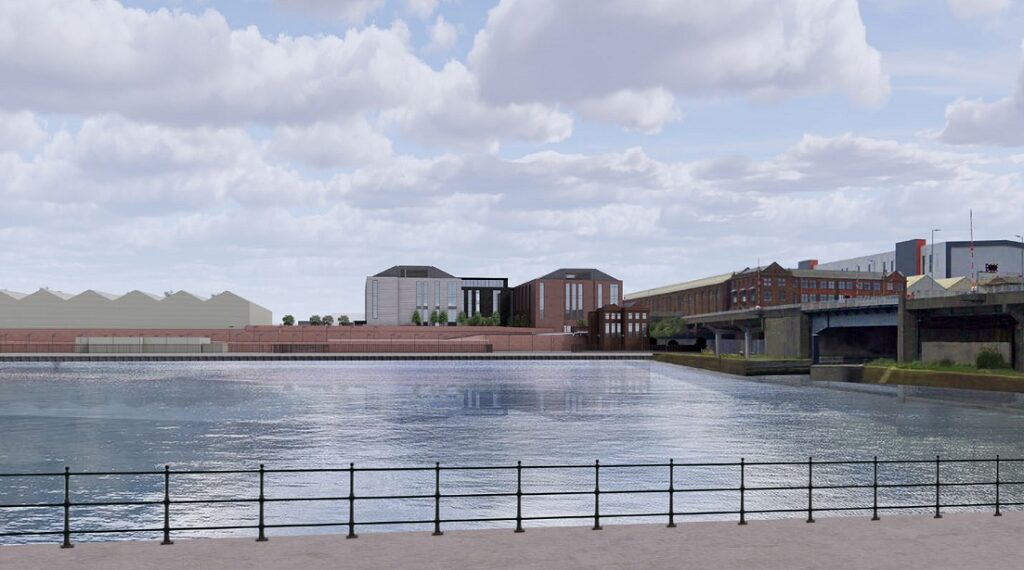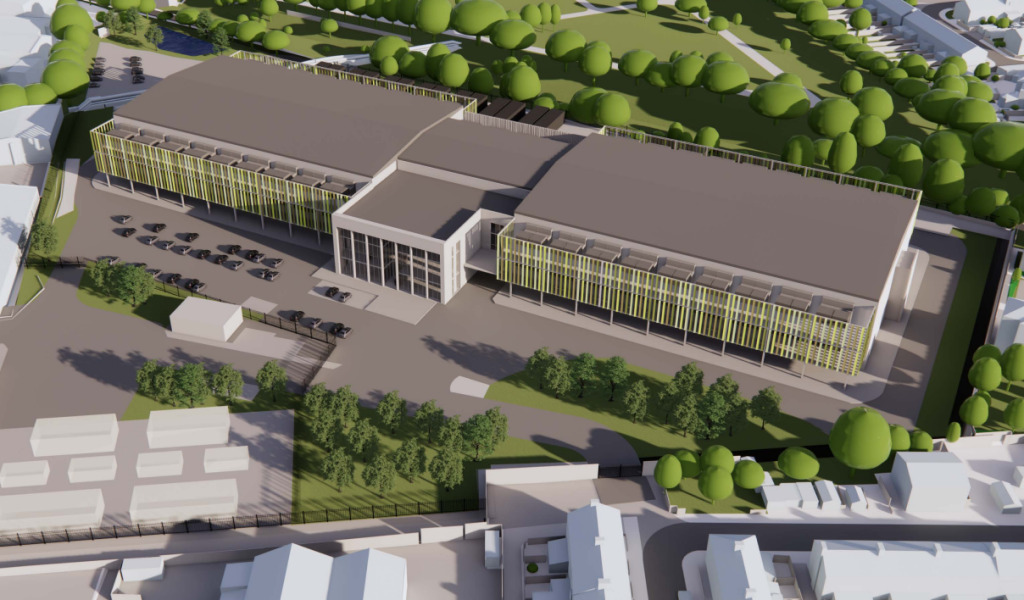Cradle to cradle | Inside Drees & Sommer’s recyclable new HQ
“Sustainable and economical: they aren’t enemies,” says Drees & Sommer’s chief executive, Steffen Szeidl, as he welcomes a room full of journalists to tour the group’s self-funded €22m (£18.4m) green office building in Stuttgart, Germany.
“Often, you hear that you have to decide between getting the maximum ROI from a project or that you want it to be really sustainable, but we believe that they can be [aligned].”
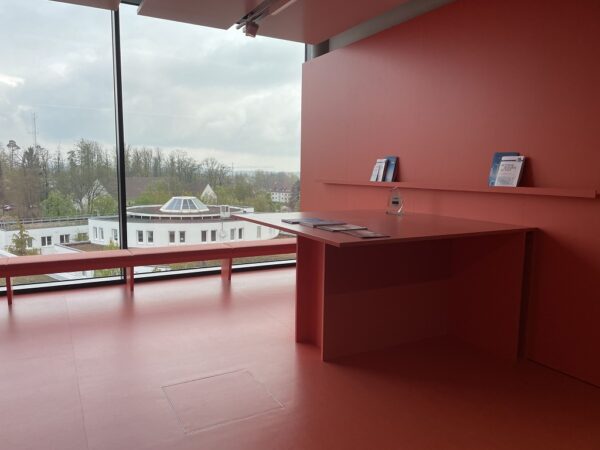
One of numerous different workplace environments in the HQ
This is a recurring theme during our tour of the ‘OWP12’ building, which we learn is ‘energy plus’ (creating more energy during its operation than it uses) thanks to several design innovations implemented by the Germany-based real estate consultant.
Construction began in Q4 2019 and completed two years later, providing 7,500 sq m across four storeys, with offices for 200 staff members, conference rooms, a terrace, and a canteen for up to 1,000 people.
Blueprint for smart and sustainable construction from Drees & Sommer on Vimeo.
Energy Plus Building
As a starting point, the team wanted the building to generate more energy than it consumed during operation, which meant they had to implement a high level of sustainable features to hit this target, including:
- Photovoltaic modules: From a distance the building looks almost totally black – an effect created by 224 PV modules coating the façade and roof.
“We started with PV modules on the roof and calculated how much energy we would gain from this,” explains Johannes Hopf, Drees & Sommer’s building performance manager. “But this wasn’t enough for the building’s whole energy consumption, so we activated the façade with PV modules to gain more energy.”
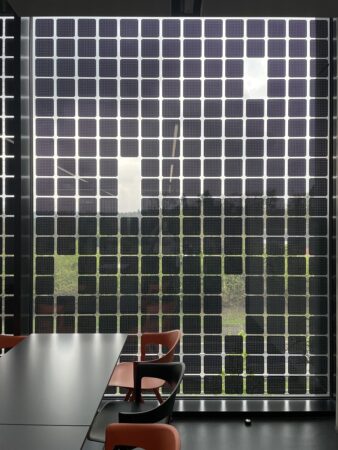
PV modules from inside
- Heat pumps: The building also generates energy from two heat pumps; geothermal and air-source.
- Green façade: An external green façade has been installed. Aside from its aesthetic benefits, the plants help with flood reduction, whilst reducing the temperature of the rooms inside. It cost under €2,000/sq m (compared with market norms of between €3,000-4,000/sq m, says Szeidl. Maintenance is also low with rain collection boxes used to water the foliage, while only 10% of the plants will need to be changed every two years.
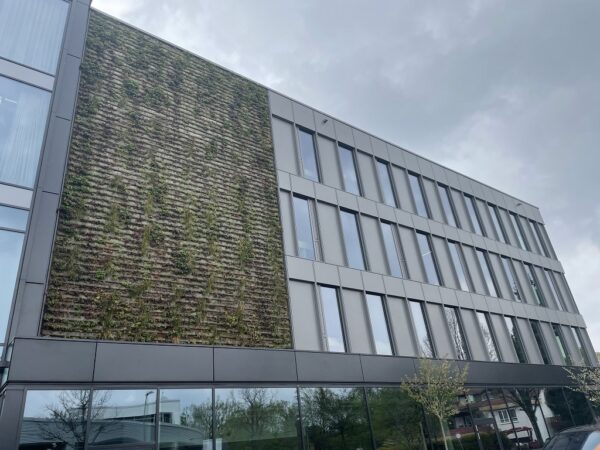
- Smart building technology: The building is key-free, with access controlled through an app-based system. Lighting, temperature, blinds and workplace booking is also done through the app. Sensors throughout the building detect motion when people aren’t using rooms for power saving. Energy data can then be collected and analysed to optimise energy use.
Modular façade
The site had several challenges, says Hopf, including a highway running close to the perimeter, resulting in a high sound emission. “To create a comfortable office building we needed noise cancelling features, which in conventional construction use a lot of material.”
To get around this they used vacuum insulation panels. These are typically used as thermal insulation but, as yet, are not widely applied for sound insultation. This enabled them to achieve 48db in soundproofing, while also reducing the thickness of the wall to 210mm.
The wall’s u-value – which measures how effective a material is as an insulator (the lower the value, the better the insulating performance) – is also around 0.4, which Hopf describes as “a very, very high level”.
When it comes to cost, Hopf says the slim façade and PV modules do come with an additional cost but that this is made up by an increase in rental space.
The group carried out a feasibility study on a sample 15-storey high rise building (each with a 600sq m floor area) using the high-performance features. The extra features cost an additional €1.3m (£1.1m) – however the space gain through the slim façade (345 sq m) paid this back through increased rentable space, with a sales revenue or rent of €3,800/sq m, he says.
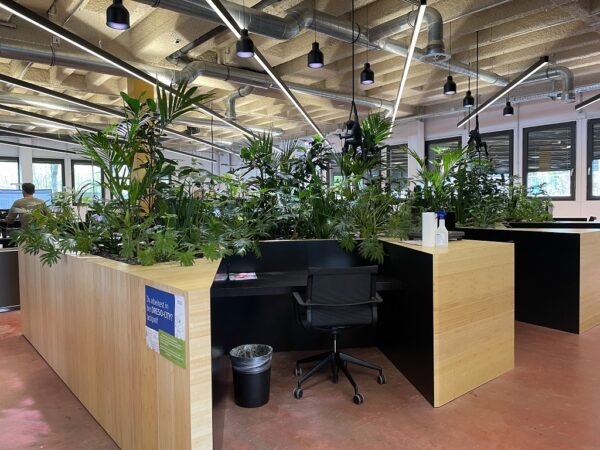
Innovation Hub
The Drees & Sommer’s building is also home to a new ‘Innovation Hub’. The group now has four hubs across Germany (which make up the group’s ‘Innovation Centre’). These hubs “work with startups and ideas to realise them into life”, says Innovation Centre leader, Michael Aechtler.
In partnership with Faro, the group recently piloted a £250,000 ‘Robodog’, which scans construction sites for quality control and construction documentation. It also created a virtual office planning tool to help clients design the internal fit-out of their buildings.
Cradle to cradle principle
The building has been designed with the circular economy in mind to help tackle the construction sector’s major materials problem says Pascal Keppler, a consultant with EPEA which is part of Drees & Sommer.
“The construction sector is responsible for 33% of global carbon emissions but what is even more important in the construction sector is the topic of materials. The sector uses 40-50% of all resources that are used in the world and is responsible for 60% of the waste all over the world,” he says.
This led to the group adopting a ‘cradle to cradle’ design principle across the scheme, which uses products and materials that are not harmful to the environment and can be easily recycled at the end of their life.
For instance, the façade is made up of individual layers, with no glue applied, so clean materials can be easily dismantled upon the building’s demolition. The carpet has also been fitted with Velcro rather than glue and also “fixes” fine dust, which improves the indoor air quality, says Keppler. “So, all of those small parts come together to make a very positive building.”


